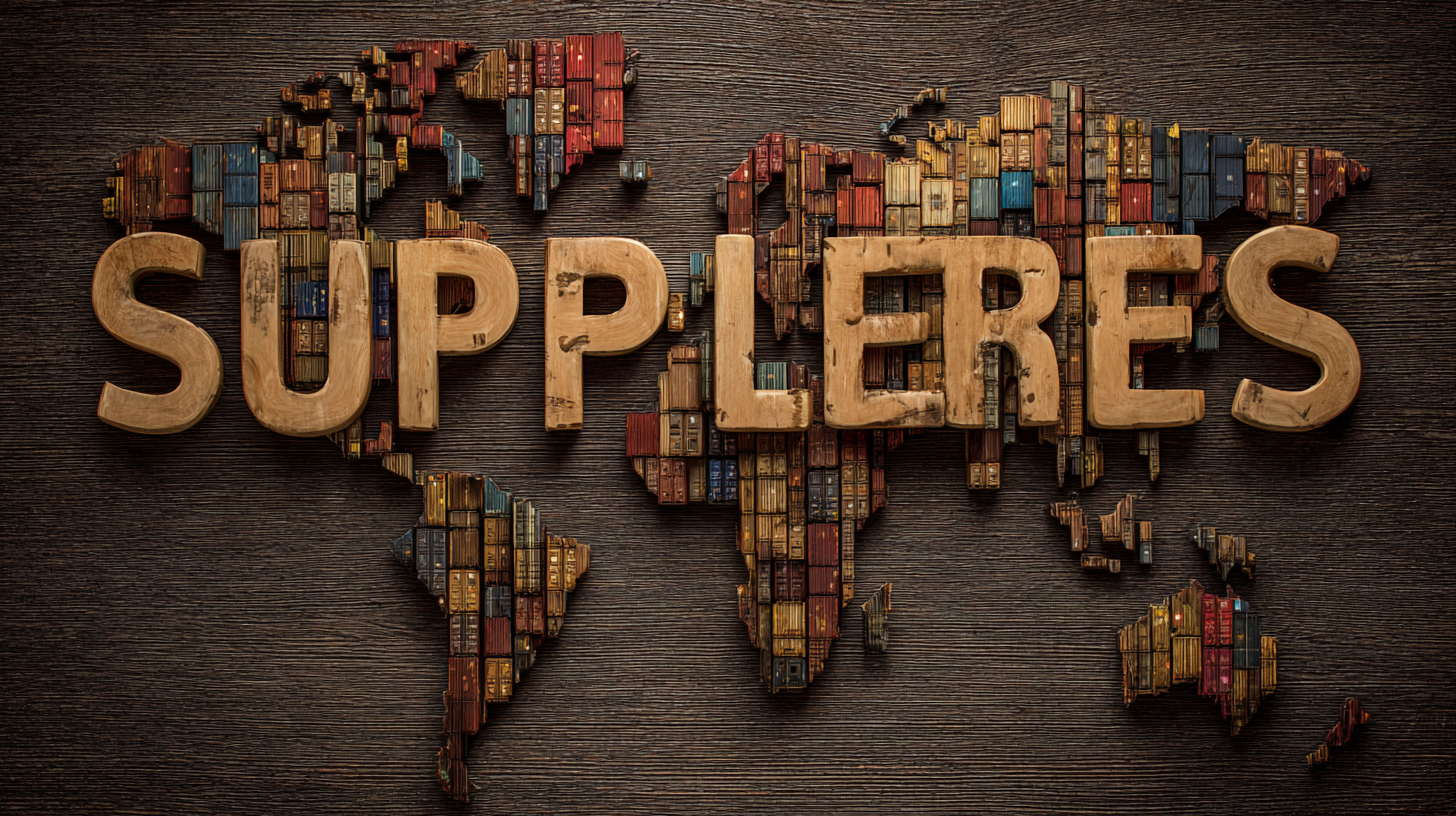
Ultimate Guide to Identifying the Best Suppliers for Global Procurement Success
In today's interconnected marketplace, the significance of choosing the right suppliers cannot be overstated, especially when aiming for global procurement success. According to a report by Deloitte, organizations that prioritize supplier relationships are 60% more likely to achieve their procurement goals. In an era where digital transformation is reshaping supply chain dynamics, understanding the landscape of potential suppliers has become crucial for businesses seeking competitive advantages. With the global supplier market projected to reach $20 trillion by 2027, it’s imperative for procurement teams to not only identify but also evaluate suppliers based on their capacity to meet quality, cost, and delivery standards. As globalization intensifies, aligning with the best suppliers ensures sustained growth and resilience in an increasingly volatile economic environment. This comprehensive guide aims to equip procurement professionals with the tools needed to effectively navigate supplier selection and foster long-term partnerships.

Key Factors for Evaluating Supplier Technical Specifications in Global Procurement
When engaging in global procurement, evaluating supplier technical specifications is crucial for ensuring quality and compatibility. According to a report by McKinsey & Company, nearly 70% of procurement leaders cite supplier reliability as the top factor influencing their decisions. This statistic underscores the importance of thoroughly assessing a supplier's technical capabilities, which includes analyzing certifications, compliance with international standards, and the quality of materials used.
Moreover, the importance of aligning supplier specifications with your company's operational needs cannot be overstated. A survey conducted by Deloitte reveals that companies that prioritize supplier evaluation can reduce their procurement costs by up to 20%. This reduction can often be attributed to selecting suppliers that adhere to superior technical specifications, thereby minimizing the risks of defects and delivery failures. As such, implementing a systematic approach to evaluate these specifications not only fosters stronger relationships with reliable suppliers but also enhances the overall supply chain's efficiency and effectiveness.

Understanding Product Technical Parameters: What Buyers Need to Know
When it comes to navigating global procurement, understanding product technical parameters is crucial for buyers. Technical parameters such as material specifications, operational capacities, and compliance regulations can greatly influence the quality and performance of the products being sourced. Buyers should familiarize themselves with these parameters to effectively communicate with suppliers and ensure that they meet their specific requirements.
**Tips:**
1. **Conduct In-Depth Research:** Prior to reaching out to suppliers, invest time in understanding the technical specifications related to your products. This knowledge will empower you to ask the right questions and make informed decisions.
2. **Request Detailed Documentation:** Always ask suppliers for detailed product documentation, including specifications and certificates of compliance. This not only ensures that products meet your expectations but also protects against potential legal issues.
3. **Engage with Multiple Suppliers:** Don't settle for the first supplier you encounter. Engaging with multiple suppliers allows you to compare their technical offerings and find the best fit for your needs while also negotiating better terms.
Understanding these aspects will enhance your procurement strategy, fostering better relationships with suppliers and ensuring product quality in your global sourcing efforts.
Ultimate Guide to Identifying the Best Suppliers for Global Procurement Success - Understanding Product Technical Parameters: What Buyers Need to Know
| Parameter | Description | Importance | Benchmark Value | Compliance Standards |
|---|---|---|---|---|
| Material Quality | The grade and type of materials used | High | Grade A | ISO 9001 |
| Product Specifications | Detailed dimensions and performance metrics | Medium | XYZ Model Specs | CE, RoHS |
| Lead Time | Time taken from order to delivery | High | 4 weeks | ISO 28000 |
| Cost | Total cost of procurement per unit | High | $50/unit | None |
| Supplier Reliability | Track record of on-time delivery | High | 98% on-time | ISO 9001 |
How to Align Supplier Capabilities with Your Product Requirements
When aiming for global procurement success, aligning supplier capabilities with product requirements is crucial. According to a report by McKinsey, companies that effectively align with suppliers can increase procurement performance by 10-20% in terms of cost reduction and quality improvement. The first step in this alignment process is a thorough assessment of the suppliers' technical and operational abilities. This involves analyzing their production capacity, quality control measures, and logistical capabilities to ensure they can meet your specific product demands.

Additionally, a study from Deloitte highlights that 88% of procurement leaders consider supplier collaboration essential for innovation and competitive advantage. It emphasizes the importance of choosing suppliers who not only fulfill the immediate requirements but also possess the capability to adapt and innovate. By engaging in open communication about product specifications and design needs, procurement professionals can foster stronger relationships with suppliers, leading to better alignment of capabilities with product requirements and ultimately enhancing supply chain efficiency.
Utilizing Technical Parameters to Enhance Supplier Selection Processes
When it comes to enhancing supplier selection processes, leveraging technical parameters can significantly improve outcomes. Technical parameters act as quantifiable benchmarks that allow procurement teams to assess potential suppliers effectively. These may include metrics such as product quality, delivery capabilities, compliance with specifications, and innovation potential. Prioritizing these factors ensures that organizations choose suppliers who can not only meet their immediate needs but also contribute to long-term strategic goals.
Tip 1: Establish a clear set of technical specifications before initiating supplier evaluation. This clarity helps to streamline the selection process and provides a solid foundation for comparison among candidates.
Another vital aspect of utilizing technical parameters involves engaging in rigorous supplier evaluations. This means conducting performance assessments based on the defined metrics and reviewing historical data to anticipate future performance. By doing this, procurement professionals can identify suppliers who consistently meet or exceed technical standards.
Tip 2: Incorporate regular feedback loops during the evaluation process to ensure that supplier performance is continuously monitored. Adapting criteria based on changing market dynamics or technological advancements can further refine supplier selection.
Best Practices for Communicating Technical Needs to Potential Suppliers
In today's global procurement landscape, effectively communicating technical needs to potential suppliers is crucial for success. According to a report by the Institute for Supply Management, approximately 63% of procurement professionals reported difficulties in translating technical specifications into clear requirements. This gap can lead to misunderstandings, ultimately affecting product quality and delivery timelines. Therefore, it is essential to establish a clear and structured communication process that incorporates visual aids, detailed specifications, and collaborative discussions to ensure that suppliers fully understand the technical needs of the project.
To further enhance supplier communication, leveraging technology can play a significant role. A study by McKinsey & Company highlights that organizations utilizing digital platforms for supplier engagement see a 20% improvement in supplier performance. Tools like collaborative project management software and real-time communication channels allow for more efficient knowledge sharing and feedback loops. By fostering an environment where suppliers feel informed and connected, businesses not only streamline the procurement process but also build stronger, more reliable partnerships that drive global success.
Supplier Evaluation Metrics
This chart illustrates the evaluation metrics for suppliers based on key performance indicators crucial for global procurement success. The highest-rated component is Communication Effectiveness, indicating a strong need for clear and effective communication of technical needs.
